Northeast
Boston trains get 'googly eyes,' give riders 'joy' on their commutes

The Massachusetts Bay Transportation Authority (MBTA) recently installed “googly eyes” on five of its trains after a public campaign requested the items be added.
“After receiving public suggestions, our team found a safe way to install these ‘googly’ eyes on a limited number of vehicles – five, to be exact – as part of our ongoing efforts to bring moments of joy to our riders’ daily commutes,” Joe Pesaturo, director of communications at the MBTA, told Fox News Digital via email on Friday, June 28.
The new additions to the trains are one of the many “creative ways” the MBTA is seeking to improve the rider experience, Pesaturo said.
THIS CONNECTICUT AMUSEMENT PARK IS THE OLDEST IN THE US
He noted the agency has also staged “in-station musical performances and children’s voice-over announcements.”
“We hope these initiatives, combined with our transit ambassadors’ dedication and our staff’s hard work on infrastructure upgrades, will continue to be a source of community connection and brighten someone’s day,” he said.
The googly eyes were added to five trains, including these two trains on the MBTA’s Green Line. (Massachusetts Bay Transportation Authority)
The googly eyes are currently on select trains on the MBTA’s Green Line and commuter rail.
The idea to add a most unusual accessory to the MBTA’s trains came as a suggestion from John Sanchez and Arielle Lok, two Massachusetts residents and MBTA riders.
STENCHY EXOTIC PLANT IN BLOOM AT BOSTON ARBORETUM: ‘A VOLATILE AROMA’
On April 29, Lok and Sanchez organized “a march to advocate for the installation of googly eyes on the front of MBTA trains,” according to an April 30 blog post on Lok’s website recapping the event.
5 OVER-THE-TOP APARTMENT AMENITIES TO DRAW IN RENTERS: ROCK-CLIMBING WALLS, PRIVATE SUBWAY ENTRANCES AND MORE
“This vision aims to inject a sense of fun into the daily commute. That is the only purpose of the eyes. There is no hidden or underlying message. We simply want googly eyes on the T,” she said.

One of the people who initially campaigned to add googly eyes to the MBTA’s trains said the goal was to “inject a sense of fun into the daily commute.” (Massachusetts Bay Transportation Authority)
In an email shared with Fox News Digital, Lok called the installation of the googly eyes “the best news we’ve ever received in our inboxes.”
She said, “We’re stoked that there was a safe way to stick the eyes on,” she said.
Lok added that it’s “incredible to see this come to life!”
Fox News Digital reached out to Lok for additional comment about the success of the campaign to add googly eyes to trains.

One person who advocated for the changes said she is “stoked” to see the googly eyes come to life. (Massachusetts Bay Transportation Authority)
The MBTA’s transit network includes subways, light rail, commuter rail, bus and ferry routes, according to its website.
In 1897, the Tremont Street subway became North America’s first subway tunnel, according to the MBTA.
For more Lifestyle articles, visit www.foxnews.com/lifestyle
This tunnel is still being used in 2024, connecting the Government Center, Park Street and Boylston stations.
Read the full article from Here

Vermont
Woman charged with trying to smuggle $40K worth of turtles across Vermont lake to Quebec | CBC News

A woman from China has been arrested at a Vermont lake bordering Quebec for trying to smuggle 29 eastern box turtles, a protected species, into Canada by kayak, according to border patrol agents.
Wan Yee Ng was arrested on the morning of June 28 at an Airbnb in Canaan, Vt., as she was about to get into an inflatable kayak with a duffle bag on Lake Wallace, according to an agent’s affidavit filed in U.S. federal court. United States Customs and Border Protection agents had been notified by Royal Canadian Mounted Police that two other people, including a man who was believed to be her husband, had started to paddle an inflatable watercraft from the Canadian side of the lake toward the United States, according to an agent’s affidavit.
The agents searched her heavy duffle bag and found 29 live eastern box turtles individually wrapped in socks, the affidavit states. Eastern box turtles are known to be sold on the Chinese black market for about $1,400 each, according to the affidavit.
Ng is charged with attempting to export the turtles from the U.S., in violation of the Endangered Species Act. A federal judge on Friday ordered that she remain detained. The federal public defender’s office, which is representing her, declined to comment.
Border patrol agents first spotted Ng at the Airbnb rental in May when they noticed a vehicle with Ontario plates travelling on a Vermont road in Canaan in an area used by smugglers, they said. Lake Wallace has been used for human and narcotic smuggling, the affidavit states. The vehicle had entered the U.S. in Alburgh, Vt., agents said.
Ng was admitted to the United States in May on a visitor visa with an intended destination of Fort Lee, N.J., the affidavit states. Border patrol agents learned on June 18 that she had again entered the U.S. in Buffalo in a vehicle with a Quebec plate and was expected to arrive at the same Airbnb on Lake Wallace in Vermont on June 25, the affidavit states. They then started to surveil the property.
Northeast
What's next for Karen Read?

Karen Read turned and hugged her father and embraced her family after Judge Beverly Cannone declared a mistrial.
The 44-year-old financial analyst accused of killing her Boston cop boyfriend, John O’Keefe, walked out of the Dedham, Massachusetts, courthouse a free woman after two years.
The jubilation on Read’s side of the courtroom was a stark contrast to O’Keefe’s mom’s tears, as family and friends rubbed her shoulders and tried to console her.
But the saga isn’t over. “The Commonwealth intends to re-try the case,” prosecutors said before a smiling Read and her lawyers were done speaking to her supporters and news outlets.
KAREN READ MURDER CASE ENDS WITH ‘DEEPLY DIVIDED’ JURY’S DECISION
Karen Read gets a long hug from her dad William before the jury breaks for lunch at Norfolk Superior Court in Dedham, Mass., Wednesday, June 26, 2024. (Greg Derr/The Patriot Ledger via AP, Pool)
The Massachusetts jury deliberated for nearly 26 hours and had been deadlocked for days.
They were “deeply divided” because of “deeply held convictions” and a “consensus is unattainable,” according to the first of two notes to the presiding judge on Monday.
Cannone issued a controversial dynamite charge (or Allen charge), which is a last-resort option to force jurors to go continue deliberations and try to reach a unanimous verdict.
KAREN READ TRIAL COULD SINK OTHER HIGH-PROFILE MURDERS, EXPERT WARNS: ‘HARD TO SEE HOW IT DOESN’T’

Karen Read smiles during a news conference in front of Norfolk Superior Court, Monday, July 1, 2024, in Dedham, Mass. A judge declared a mistrial Monday after jurors deadlocked in the case of Read, who was accused of killing her Boston police officer boyfriend by striking him with her SUV and leaving him in a snowstorm. (AP Photo/Steven Senne)
The dynamite charge’s “effectiveness in breaking deadlocks and securing verdicts is well-documented,” according to a blog post by Texas-based law firm Varghese and Summersett.
But it’s not used in about two dozen states, as opponents argue “it can lead to verdicts that are not truly unanimous, as jurors may change their votes due to peer pressure rather than genuine conviction,” the firm said.
The result was the same. “Despite our commitment to the duty entrusted in us, we find ourselves deeply divided by fundamental differences in our opinions and state of mind,” the jury wrote in its final note to the judge.

Karen Read smiles as defense attorney David Yannetti speaks to reporters in front of Norfolk Superior Court, Monday, July 1, 2024, in Dedham, Mass. A judge declared a mistrial Monday after jurors deadlocked in the case of Read, who was accused of killing her Boston police officer boyfriend by striking him with her SUV and leaving him in a snowstorm. (AP Photo/Steven Senne)

Karen Read talks with her legal team at the Norfolk Superior Court in Dedham, Mass., Monday, July 1, 2024. This is their fifth day of deliberations in the murder trial for Read. Read is accused of backing her SUV into her Boston Police officer boyfriend, John O’Keefe, and leaving him to die in a blizzard in Canton, in 2022. (Pat Greenhouse/The Boston Globe via AP, Pool)
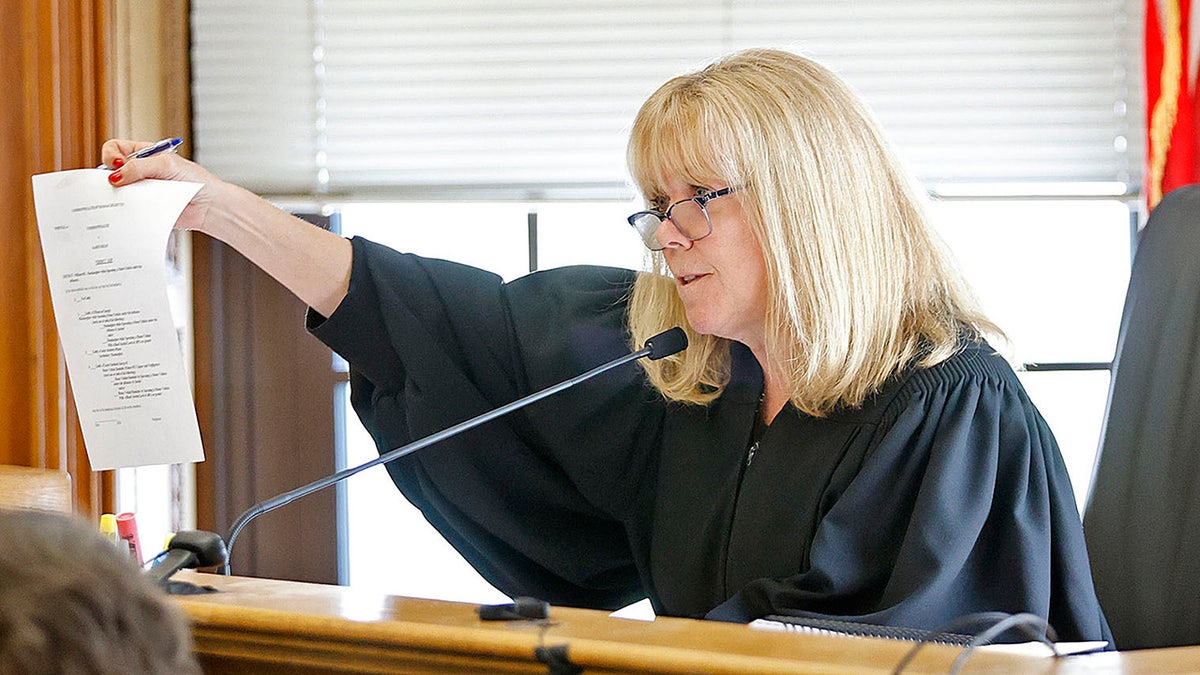
Judge Beverly Cannone looks over the verdict slip the jurors have to fill out when they reach a verdict in Karen Read’s murder trial, Wednesday, June 26, 2024, at Norfolk Superior Court in Dedham, Mass. The defense has asked for some modifications. Read is charged with second-degree murder in the January 2022 death of her boyfriend, Boston Police Officer John O’Keefe. (Greg Derr/The Patriot Ledger via AP, Pool)
The jury sat for weeks during a trial that included 74 witnesses and nearly 700 pieces of evidence.
Prosecutors argued a shouting match turned deadly during a booze-infused fight in January 2022, when Read allegedly backed into O’Keefe with her SUV and left him to die during a nor’easter.
WATCH: DASHCAM FROM THE NIGHT JOHN O’KEEFE WAS FOUND DEAD
His body was found on the front lawn of an influential family with deep ties to law enforcement and prosecutors. Read claimed that the family framed her for O’Keefe’s death in an elaborate cover-up.
The deadlocked jury was as torn as the otherwise quiet Boston suburb of Canton. And the opposing jurors weren’t backing down.
“Despite our commitment to the duty entrusted in us, we find ourselves deeply divided by fundamental differences in our opinions and state of mind,” the jury said before Cannone declared a mistrial.
Since Read wasn’t found guilty or not guilty, here’s what could happen next, according to experts.

Flags, flowers and remembrances flank the headstone of John O’Keefe, a Boston police officer, at Blue Hill Cemetery, Thursday, June 27, 2024, in Braintree, Mass. A judge declared a mistrial Monday, July 1, 2024, after jurors deadlocked in the case of O’Keefe’s girlfriend, Karen Read, who was accused of killing him by striking him with her SUV and leaving him in a snowstorm. Prosecutors said in a statement that they intend to retry the case. (AP Photo/Charles Krupa, File)
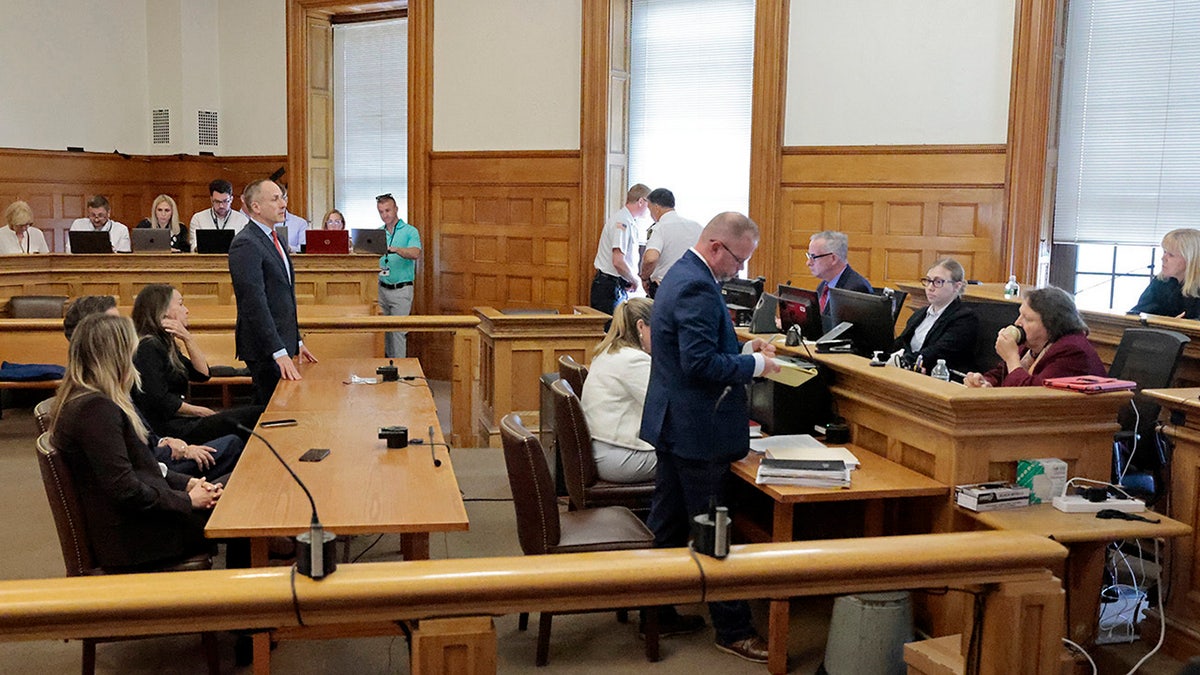
Before the jury enters, Judge Beverly J. Cannone, right, speaks to the defense and prosecution during the Karen Read trial at the Norfolk Superior Court in Dedham, Mass., Monday, July 1, 2024. (Pat Greenhouse/The Boston Globe via AP, Pool)
Option 1: The case is over, no more charges
Read beat the charges of second-degree murder, motor vehicle manslaughter while driving under the influence and leaving the scene of a collision causing injury and death because the jury couldn’t come to a unanimous decision, not because they thought they believed she was innocent.
That puts the ball in the prosecutors’ hands.
They can choose to end the two-year saga now.
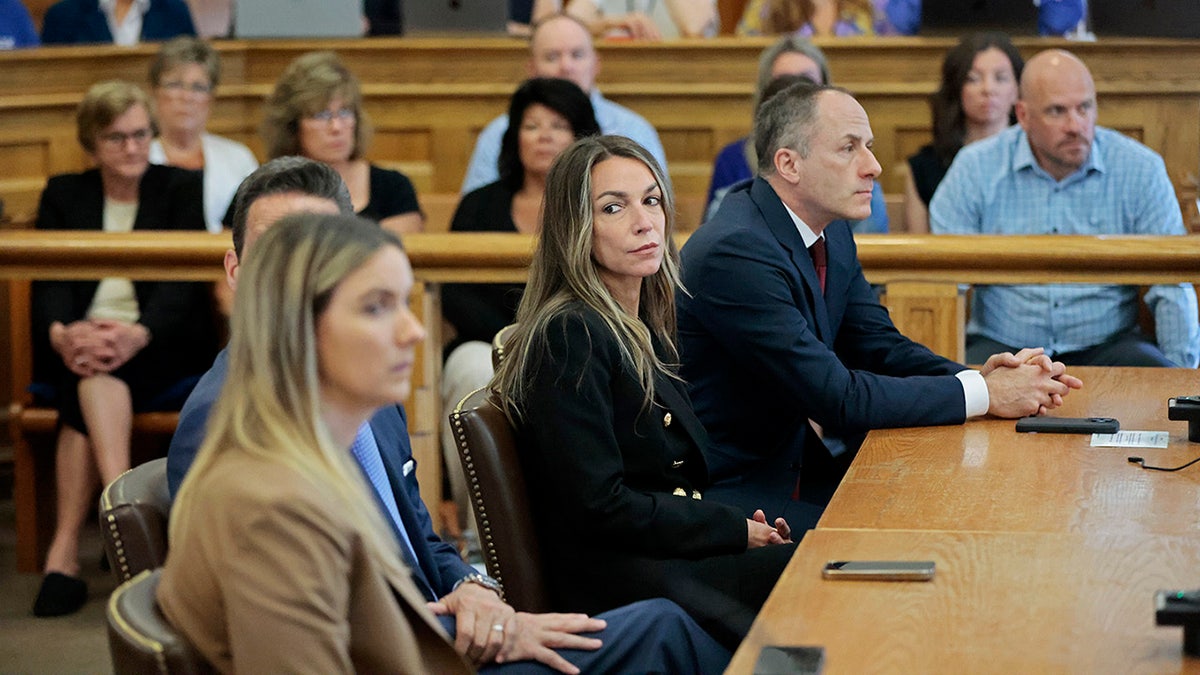
Karen Read, center, listens as Judge Beverly J. Cannone greets the jury at the start of the third day of deliberations in her murder trial, in Norfolk Superior Court on Thursday, June 27, 2024 in Dedham, Massachusetts. (Pat Greenhouse/The Boston Globe via AP, Pool)

Prosecutor Adam Lally speaks in court during jury selection of the Karen Read trial at Norfolk County Superior Court on Thursday, April 18, 2024, in Dedham, Massachusetts. Read, 44, was accused of running into her Boston police officer boyfriend with her SUV in the middle of a nor’easter and leaving him for dead after a night of heavy drinking. (David McGlynn/New York Post via AP, Pool)
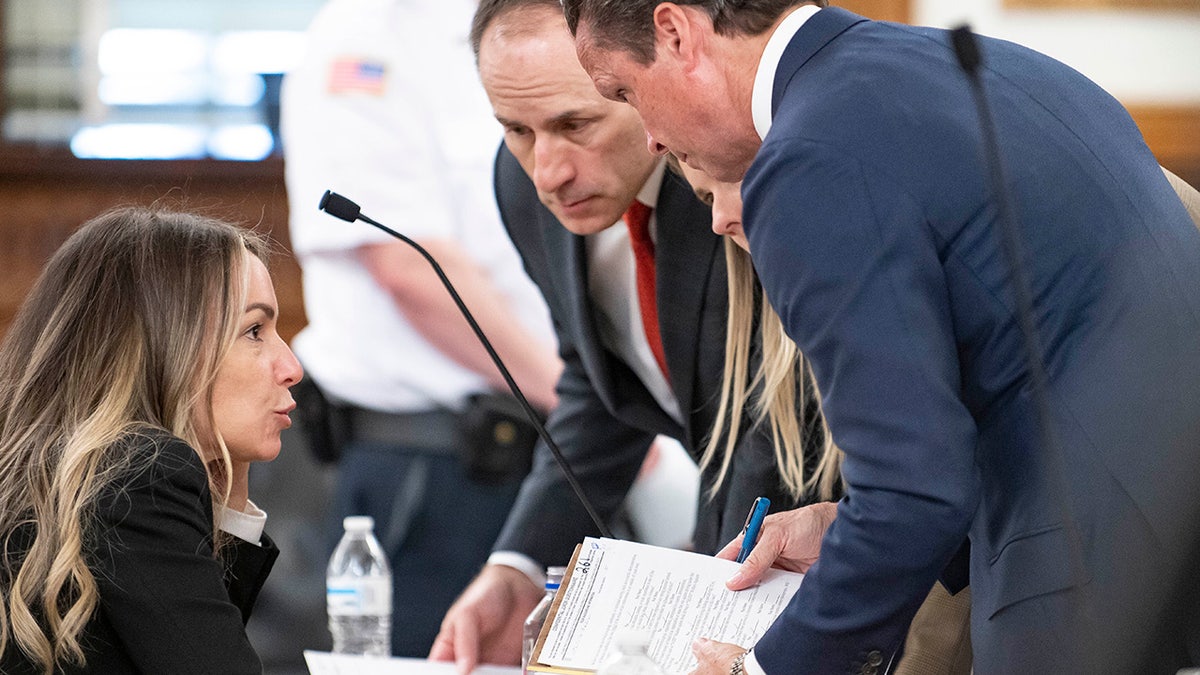
Karen Read speaks with lawyers in court during jury selection at Norfolk County Superior Court on Thursday, April 18, 2024 in Dedham, Massachusetts. Read, 44, was accused of running into her Boston police officer boyfriend with her SUV in the middle of a nor’easter and leaving him for dead after a night of heavy drinking. (David McGlynn/New York Post via AP, Pool)
Option 2: New trial, new jury with same charges
The Norfolk County District Attorney’s Office quickly fired off a statement that said it intends to retry the case.
And Read’s lawyer, Alan Jackson, said, “We will not stop fighting.”
That puts the two sides on another collision course, although experts pointed out pitfalls that could doom the DA’s office again.
WATCH: EXPERT REACTS TO PROCTOR’S TESTIMONY AND EXPLAINS ITS FAR-REACHING IMPACT
Daniel Medwed, Northeastern University professor of law and criminal justice, believes the prosecution needs to bring more evidence, if this is the route they choose.
“I think they might talk a big game in the immediate aftermath about retrying her,” Medwed told Northeastern Global News.
“But ultimately, unless new evidence emerges, I think it might be a tough hill to climb, and they might not pursue it.”
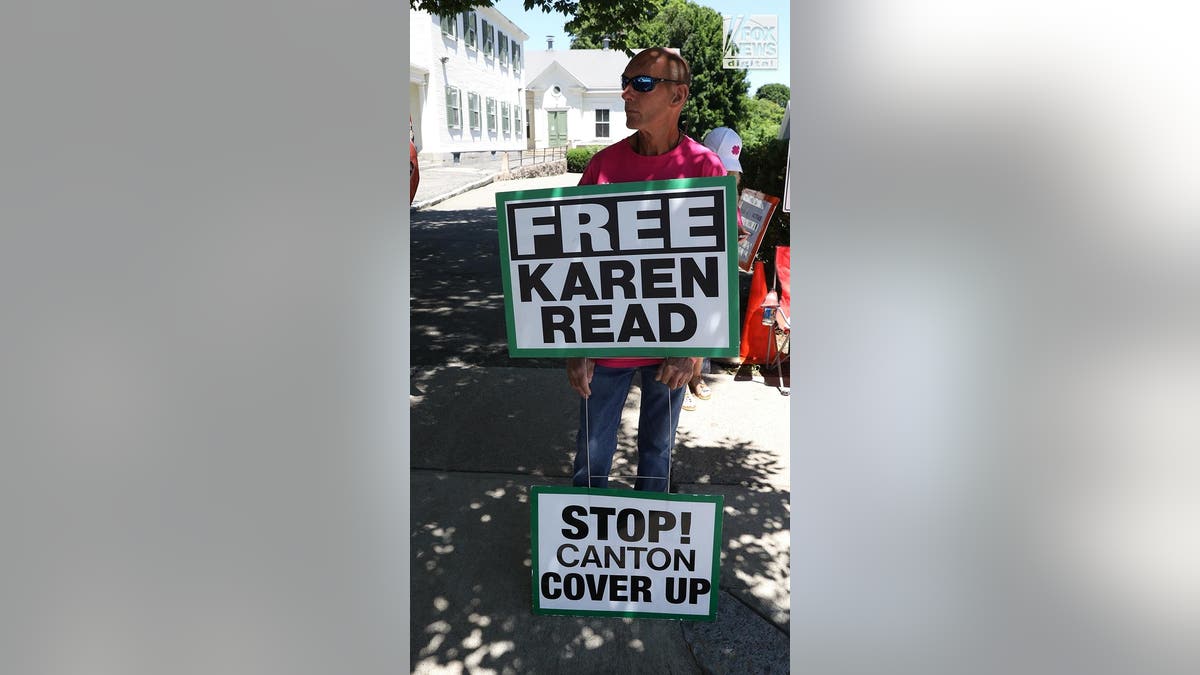
Supporters of Karen Read gather outside the courthouse in Dedham, MA on Friday, June 28, 2024. (Patriot Pics/Backgrid for Fox News Digital)
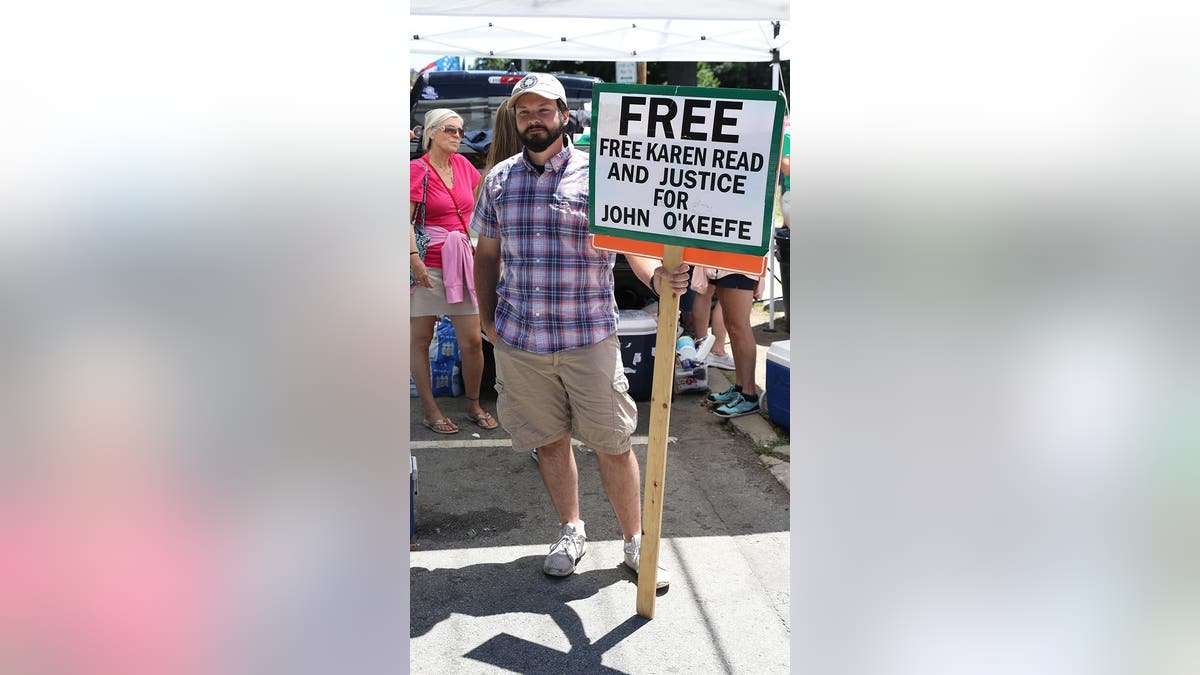
Supporters of Karen Read gather outside the courthouse in Dedham, MA on Friday, June 28, 2024. Read faced three charges in the death of her Boston police officer boyfriend John O’Keefe in January 2022. (Patriot Pics/Backgrid for Fox News Digital)
There’s also added layers of complication, with investigations into Massachusetts State Trooper Michael Proctor, whose sexist and vulgar texts may have destroyed the prosecution’s case, as well as an ongoing audit of potential misconduct in the Canton Police Department.
“You know that trooper’s testimony really blew up in the commonwealth’s face,” Suffolk Law professor Rosanna Cavallaro told NBC 10 Boston.
“If in fact he is suspended or any kind of consequence for his misconduct, then that’s going to make it really hard for the commonwealth to decide how to present their case.”
GO HERE FOR MORE TRUE CRIME FROM FOX NEWS DIGITAL
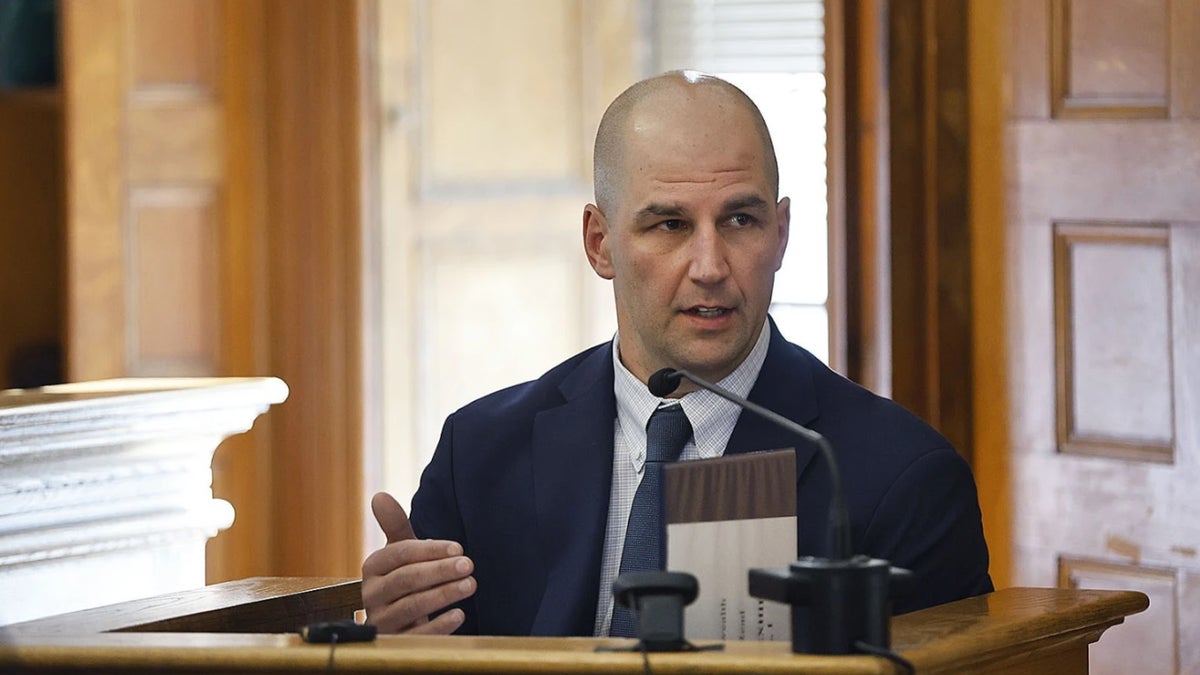
Massachusetts State Trooper Michael Proctor testifies during Karen Read’s trial on Wednesday, June 12, 2024 in Norfolk Superior Court in Dedham, Massachusetts. (Greg Derr/The Patriot Ledger via AP, Pool)
Option 3: New trial, new jury, new charges
A possible way around some of the potential pitfalls of retrying Read for murder is to file different charges, law expert Shira Diner told Fox News Digital.
Diner is a lecturer and clinical instructor at Boston University School of Law and the president of the Massachusetts Association of Criminal Defense Lawyers.
7M AND THE DANCING TIKTOK CULT: EXPERT DISCUSSES POPULAR NETFLIX SERIES AND ITS LARGER THREAT

Karen Read speaks with her lawyer as the jury deliberates in her murder trail, Wednesday June 26, 2024, at Norfolk Superior Court in Dedham, Mass. (Greg Derr/The Patriot Ledger via AP, Pool)
“(The prosecution) is entirely in control of the charges, so I think they could recharge in a different way,” she said.
What those charges could be remains to be seen, if this is the route the prosecution takes.
WATCH: DINER EXPLAINS HOW PROCTOR’S TESTIMONY COULD BLOW UP ANOTHER MURDER CASE
For now, the case is over. Read is free.
The two sides – along with their warring supporters – will retreat into their respective corners of the ring. The families will have to regroup.
The next court appearance is scheduled for July 22 for a conference.
Read the full article from Here
Boston, MA
As summers become hotter, Boston moves to implement its heat resilience plans

For much of the country, this past June was hot — sometimes dangerously hot. In Boston, record-setting temperatures and the heightened risk of heatstroke prompted the city to declare a heat emergency, end school days early and open cooling centers. As heat waves become more common in the region, city officials have created a plan to prepare our infrastructure and communities for the hotter days ahead. GBH’s All Things Considered host Arun Rath discussed Boston’s heat resilience plan with Zoe Davis, a climate resilience project manager with Boston’s Environment Department, and Matt Kearney, the deputy chief of the Office of Emergency Management. What follows is a lightly edited transcript.
Arun Rath: To start off, we’re already seeing the effects of climate change in the city, right? It’s not our imagination. It feels that summers have been getting much, much hotter.
Zoe Davis: That is definitely true. In the city of Boston we have historically had about ten days over 90 degrees in Boston’s more recent history. But due to the impacts of climate change, we are expecting to see more days over a 90-degree threshold and even more days of chronic heat, which are days over 80 degrees.
Rath: In terms of the city specifically, we hear this term that Boston is a “heat island.” Can you talk about what that means and how different communities in the city might experience heat waves differently?
Davis: So, relative to the state of Massachusetts, the Greater Boston area and Boston itself is considered to be a heat island because it’s hotter than the surrounding area. So we do say that the city of Boston is itself a heat island, but within the city there are these temperature hotspots: areas that are within the city that are hotter than others. So some of these areas are typically areas of higher building density, areas where there’s expansive roadway or dark hardscape. These often follow our transportation corridors, areas where there’s large buildings. Then areas that are cooler in the city, by contrast, are parks, typically, and also along the coastline edge and areas that are near bodies of water.
Rath: Matt, how is the city preparing for this? Something that that goes beyond what we’re used to preparing for.
Matt Kearney: Yeah, it takes a whole city approach. So on the Emergency Management side, our work is looking at the short-term response, [to] this heat that’s occurring earlier in the year and later in the year. I know we declared a heat emergency in September last year, which is uncommon. So it’s on us to work with the Environment Department, Boston Planning Development Agency and all the other stakeholders that are taking these long-term projections, and getting a sense of where those resources are needed now in the city. So we’re taking a look at these heat islands that we know are impacting certain neighborhoods, ensuring that they have the adequate cooling resources, as well as other resources that we can make available to those residents because their neighborhoods are hotter than other areas within the city.
Rath: Other sorts of adaptations we’ve been making to climate change from energy conservation to cleaner forms of energy have obvious other benefits. Aside from the direct ones we’re talking about when we’re upgrading infrastructure for heat resilience, are there other additional side benefits to doing that as well?
Davis: Yes. We look at co-benefits of integrating heat resilience broadly. So for example, when we’re thinking about integrating heat resiliency to our roadway infrastructure, there are opportunities to also integrate green infrastructure, which then can have a positive impact on how we are managing stormwater. There’s also elements in this example of making sure to integrate elements around safety, wayfinding and accessibility. I think, similarly, when we’re thinking about improvements to our buildings — as you had mentioned, integrating energy efficient elements into our buildings, as well as coordinating that with decarbonization efforts — is a part of a holistic approach to being climate-resilient, which includes heat resilience as well.
-

 News1 week ago
News1 week agoA Florida family is suing NASA after a piece of space debris crashed through their home
-

 World1 week ago
World1 week agoNew Caledonia independence activists sent to France for detention
-

 World1 week ago
World1 week agoIsrael accepts bilateral meeting with EU, but with conditions
-

 Movie Reviews1 week ago
Movie Reviews1 week agoFilm Review: Everyday of the Dead (2023) by Yuyuma Naoki
-
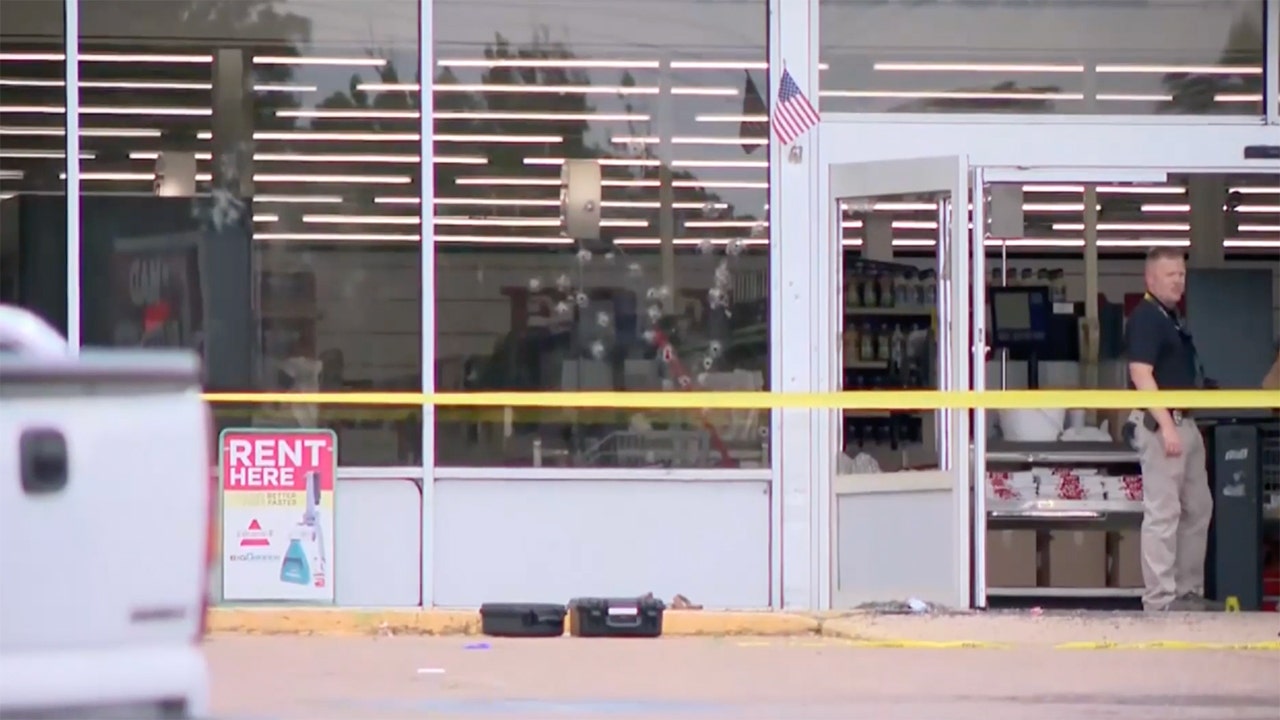
 News1 week ago
News1 week agoArkansas police confirm 4th victim died in grocery store shooting
-

 World1 week ago
World1 week agoNetanyahu says war will continue even if ceasefire deal agreed with Hamas
-

 Politics1 week ago
Politics1 week agoBiden official says past social media posts don’t reflect ‘current views,’ vows to support admin ‘agenda’
-

 Politics1 week ago
Politics1 week agoDeSantis signs bill allowing residents to kill bears, vetoes bill that fines slow left lane drivers













